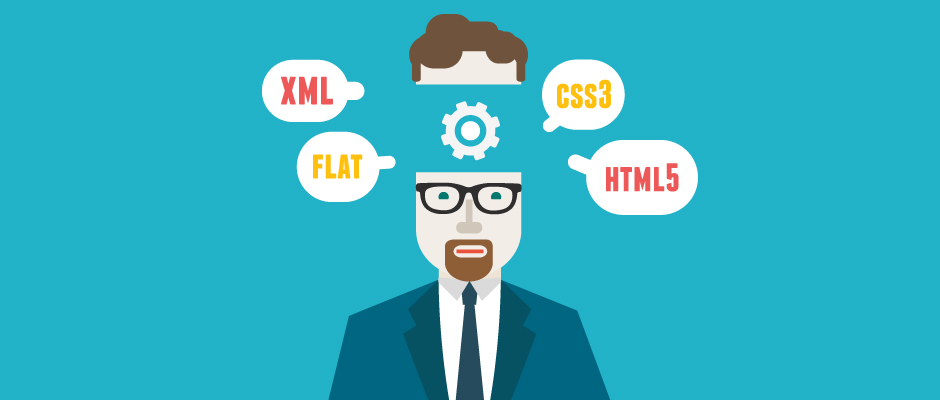In web development, Vue provides a simple and powerful animation system to achieve transition effects. 1. Use <transition> to wrap a single element to implement basic animation, define the animation name through the name attribute, and achieve the fade effect with the corresponding CSS class, where v-if control display is the key. 2. Use <transition-group> to combine the key attribute to add animations to multiple elements, such as the transition effect when the list is added or deleted, and you can set animation styles through CSS. 3. Combining CSS animation libraries such as Animate.css can quickly achieve more complex animation effects. Just specify enter-active-class and leave-active-class in <transition> to complete the integration. By mastering these methods, developers can efficiently create rich and smooth user interface interaction effects.

In web development, animation and transition effects can not only improve the user experience, but also make the interface more vivid. Vue provides a simple but powerful animation system, through transition and animation it is easy to achieve smooth transitions when component switching and element state changes.

1. Use <transition></transition> to wrap a single element to implement basic animation
Vue's <transition></transition> component can wrap any element or component, adding animation effects when entering (enter) and leaving (leave). It does not render to the actual DOM element and is only used to control the animation flow.

The way to use is very simple. You just need to place the target element between the <transition></transition> tags, specify a name (name attribute), and then write the corresponding CSS transition class name:
<transition name="fade"> <p v-if="show">This text fades</p> </transition>
The corresponding CSS is written as follows:

.fade-enter-active, .fade-leave-active {
transition: opacity 0.5s;
}
.fade-enter, .fade-leave-to {
opacity: 0;
} In this way, when show value changes, the text will have an animation effect of fading in or out. Note that v-if controls whether it is displayed or not. If you use v-show , you need to use <transition mode="in-out"> or other methods to handle it instead.
2. Use <transition-group> to implement list animations of multiple elements
If you want to add animations to multiple items in a list, such as adding or deleting an item to produce a transition effect, you need to use <transition-group> . This component must be used with key , and each child element must have a unique key value.
The sample code is as follows:
<transition-group name="list" tag="ul">
<li v-for="item in items" :key="item.id">
{{ item.text }}
</li>
</transition-group>The CSS part can be written like this:
.list-enter-active, .list-leave-active {
transition: all 0.5s;
}
.list-enter, .list-leave-to {
opacity: 0;
transform: translateY(20px);
} In this way, when you push new data into the items array, or delete an element from the middle, you will see the corresponding animation effect. Note tag="ul" is used here to indicate that the final rendering is ul tag.
3. Combining the CSS animation library to simplify development
Although the transition system that comes with Vue is already very powerful, if you want more complex animations, such as bounce, rotation and other effects, you can directly introduce the CSS animation library, such as Animate.css .
The usage method is also very simple: first install and introduce Animate.css, and then set enter-active-class and leave-active-class in <transition> :
<transition enter-active-class="animate__animated animate__fadeInDown" leave-active-class="animate__animated animate__fadeOutUp" > <p v-if="show">This text will use the animation of Animate.css</p> </transition>
It should be noted that the default enter/leave class in this mode will be overwritten, so there is no need to write additional CSS.
Basically that's it. Vue's animation mechanism is designed very friendly and not difficult to get started, but it is very flexible. As long as you master the basic usage of <transition></transition> and <transition-group> and combine it with some CSS animation techniques, you can create many practical and beautiful interactive effects.
The above is the detailed content of Vue Animation and Transition Effects. For more information, please follow other related articles on the PHP Chinese website!

Hot AI Tools

Undress AI Tool
Undress images for free

Undresser.AI Undress
AI-powered app for creating realistic nude photos

AI Clothes Remover
Online AI tool for removing clothes from photos.

Clothoff.io
AI clothes remover

Video Face Swap
Swap faces in any video effortlessly with our completely free AI face swap tool!

Hot Article

Hot Tools

Notepad++7.3.1
Easy-to-use and free code editor

SublimeText3 Chinese version
Chinese version, very easy to use

Zend Studio 13.0.1
Powerful PHP integrated development environment

Dreamweaver CS6
Visual web development tools

SublimeText3 Mac version
God-level code editing software (SublimeText3)

Hot Topics
 How can CSS be used to implement dark mode theming on a website?
Jun 19, 2025 am 12:51 AM
How can CSS be used to implement dark mode theming on a website?
Jun 19, 2025 am 12:51 AM
ToimplementdarkmodeinCSSeffectively,useCSSvariablesforthemecolors,detectsystempreferenceswithprefers-color-scheme,addamanualtogglebutton,andhandleimagesandbackgroundsthoughtfully.1.DefineCSSvariablesforlightanddarkthemestomanagecolorsefficiently.2.Us
 Can you explain the difference between em, rem, px, and viewport units (vh, vw)?
Jun 19, 2025 am 12:51 AM
Can you explain the difference between em, rem, px, and viewport units (vh, vw)?
Jun 19, 2025 am 12:51 AM
The topic differencebetweenem, Rem, PX, andViewportunits (VH, VW) LiesintheirreFerencepoint: PXISFixedandbasedonpixelvalues, emissrelative EtothefontsizeFheelementoritsparent, Remisrelelatotherootfontsize, AndVH/VwarebaseDontheviewporttimensions.1.PXoffersprecis
 What are the key differences between inline, block, inline-block, and flex display values?
Jun 20, 2025 am 01:01 AM
What are the key differences between inline, block, inline-block, and flex display values?
Jun 20, 2025 am 01:01 AM
Choosing the correct display value in CSS is crucial because it controls the behavior of elements in the layout. 1.inline: Make elements flow like text, without occupying a single line, and cannot directly set width and height, suitable for elements in text, such as; 2.block: Make elements exclusively occupy one line and occupy all width, can set width and height and inner and outer margins, suitable for structured elements, such as; 3.inline-block: has both block characteristics and inline layout, can set size but still display in the same line, suitable for horizontal layouts that require consistent spacing; 4.flex: Modern layout mode, suitable for containers, easy to achieve alignment and distribution through justify-content, align-items and other attributes, yes
 What are CSS Houdini APIs, and how do they allow developers to extend CSS itself?
Jun 19, 2025 am 12:52 AM
What are CSS Houdini APIs, and how do they allow developers to extend CSS itself?
Jun 19, 2025 am 12:52 AM
CSSHoudini is a set of APIs that allow developers to directly manipulate and extend the browser's style processing flow through JavaScript. 1. PaintWorklet controls element drawing; 2. LayoutWorklet custom layout logic; 3. AnimationWorklet implements high-performance animation; 4. Parser&TypedOM efficiently operates CSS properties; 5. Properties&ValuesAPI registers custom properties; 6. FontMetricsAPI obtains font information. It allows developers to expand CSS in unprecedented ways, achieve effects such as wave backgrounds, and have good performance and flexibility
 What is the significance of Vue's reactivity transform (experimental, then removed) and its goals?
Jun 20, 2025 am 01:01 AM
What is the significance of Vue's reactivity transform (experimental, then removed) and its goals?
Jun 20, 2025 am 01:01 AM
ReactivitytransforminVue3aimedtosimplifyhandlingreactivedatabyautomaticallytrackingandmanagingreactivitywithoutrequiringmanualref()or.valueusage.Itsoughttoreduceboilerplateandimprovecodereadabilitybytreatingvariableslikeletandconstasautomaticallyreac
 How can CSS gradients (linear-gradient, radial-gradient) be used to create rich backgrounds?
Jun 21, 2025 am 01:05 AM
How can CSS gradients (linear-gradient, radial-gradient) be used to create rich backgrounds?
Jun 21, 2025 am 01:05 AM
CSSgradientsenhancebackgroundswithdepthandvisualappeal.1.Startwithlineargradientsforsmoothcolortransitionsalongaline,specifyingdirectionandcolorstops.2.Useradialgradientsforcirculareffects,adjustingshapeandcenterposition.3.Layermultiplegradientstocre
 How can internationalization (i18n) and localization (l10n) be implemented in a Vue application?
Jun 20, 2025 am 01:00 AM
How can internationalization (i18n) and localization (l10n) be implemented in a Vue application?
Jun 20, 2025 am 01:00 AM
InternationalizationandlocalizationinVueappsareprimarilyhandledusingtheVueI18nplugin.1.Installvue-i18nvianpmoryarn.2.CreatelocaleJSONfiles(e.g.,en.json,es.json)fortranslationmessages.3.Setupthei18ninstanceinmain.jswithlocaleconfigurationandmessagefil
 How does provide and inject allow for deep component communication without prop drilling in Vue?
Jun 20, 2025 am 01:03 AM
How does provide and inject allow for deep component communication without prop drilling in Vue?
Jun 20, 2025 am 01:03 AM
In Vue, provide and inject are features for directly passing data across hierarchical components. The parent component provides data or methods through provide, and descendant components directly inject and use these data or methods through inject, without passing props layer by layer; 2. It is suitable for avoiding "propdrilling", such as passing global or shared data such as topics, user status, API services, etc.; 3. Note when using: non-responsive original values ??must be wrapped into responsive objects to achieve responsive updates, and should not be abused to avoid affecting maintainability.






